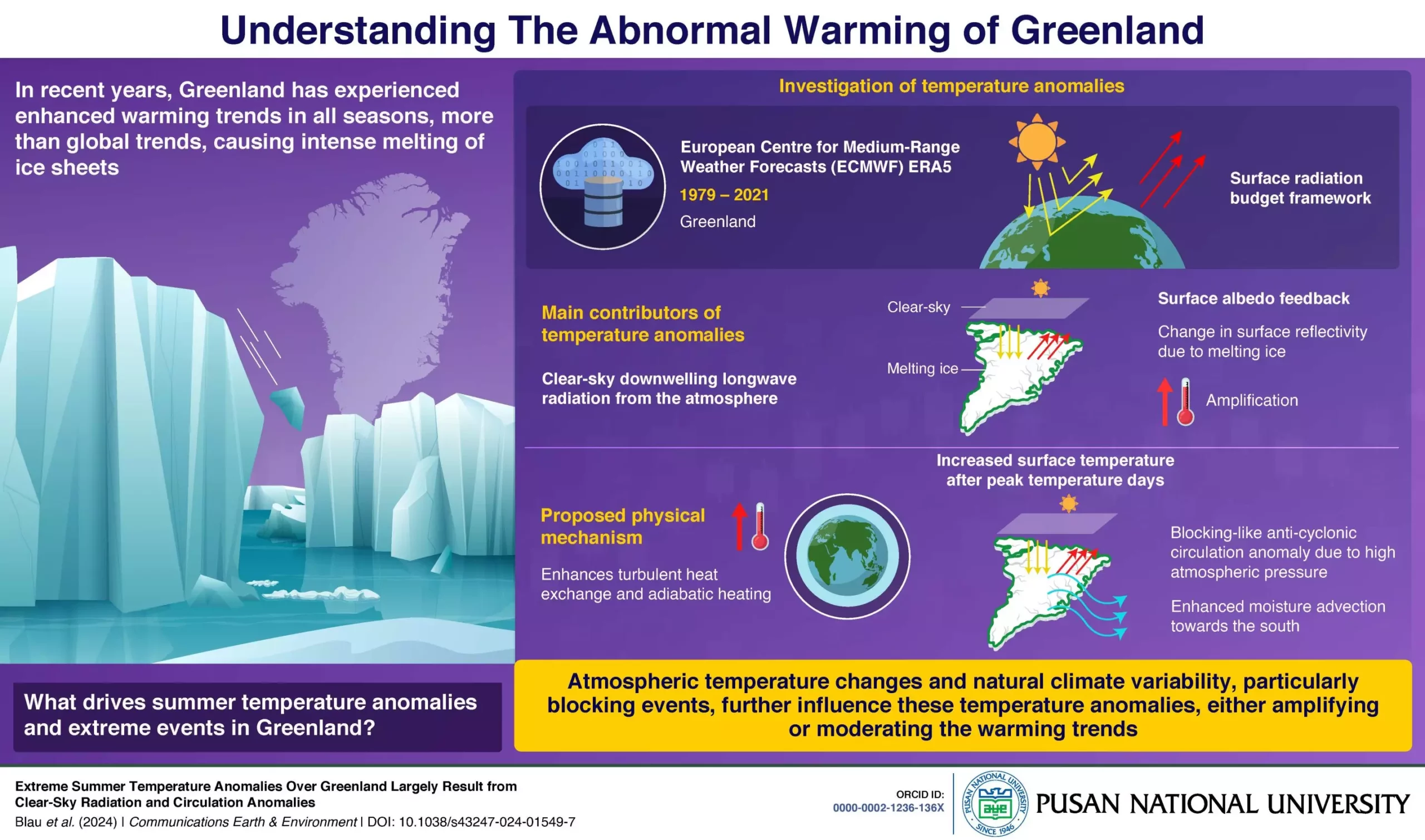The phenomenon of Arctic Amplification, driven by human activities, has resulted in accelerated warming in Greenland, surpassing global average temperature trends. This heightened warming in the northern regions poses a significant threat to coastal areas and ecosystems worldwide by intensifying ice sheet melting and potentially raising sea levels. Understanding the factors responsible for Arctic Amplification is essential for predicting future climate impacts and implementing effective mitigation strategies.
A recent study conducted by a team of researchers from Korea, led by Professor Kyung-Ja Ha, delved into the anomalous warming trends in Greenland from 1979 to 2021. Their findings, published in the journal Communications Earth & Environment, focused on year-to-year perturbations in the surface energy budget to elucidate extreme temperature events in Greenland. By employing a surface energy budget framework, the researchers were able to determine the key drivers behind Greenland’s surface warming.
The study revealed that increases in clear-sky downwelling longwave radiation, coupled with the surface albedo feedback, played a pivotal role in driving Greenland’s surface warming. Clear-sky downwelling longwave radiation, which refers to the heat radiated by the atmosphere to the surface on clear-sky days, intensified in warm years, leading to elevated surface temperatures. This increase in radiation was primarily driven by higher atmospheric temperatures, triggering turbulent heat exchange between the atmosphere and the surface.
The researchers also identified the influence of atmospheric conditions on Greenland’s extreme temperature events. During warm years, the combination of increased surface temperatures and tropospheric warming facilitated moisture transport from the south to Greenland, fostering the formation of a high-pressure system that trapped warm conditions. This dynamic process of atmospheric heat exchange and moisture transport created a feedback loop that amplified warming effects and intensified ice melting in Greenland.
The study highlighted the significance of natural climate variability, particularly the Greenland blocking index, in either amplifying or moderating warming trends in Greenland. Different modes of natural climate variability can lead to extreme temperature events and impact the overall rate of ice sheet melting. Understanding the interplay between natural climate variability and anthropogenic influences is crucial for projecting the future development of the Greenland ice sheet and devising strategies to mitigate further degradation.
By shedding light on the drivers of Greenland’s extreme summer temperatures, this study provides valuable insights into the impacts of Arctic Amplification on the region. The findings underscore the urgent need to address climate change and its consequences on Greenland’s ice sheet melting and sea level rise. By incorporating these research findings into future climate projections, policymakers can implement targeted mitigation strategies to safeguard Greenland’s fragile ecosystem and coastal areas.


Leave a Reply